Smoking Room, ANSYS Fluent CFD Simulation Tutorial
$180.00 $90.00 Student Discount
- The present problem simulates the cigarette smoke inside a smoking room, existing an exhaust fan on the upper wall of the room by ANSYS Fluent software.
- The geometry of the present model is three-dimensional and has been designed using Design Modeler software.
- The meshing of the model has been done using Fluent Meshing software. The mesh type is Polyhedra, and the element number is 965,187.
- The present simulation aims to investigate the movement of smoke in the room, its pathlines, contours, and vectors.
- Using the both Species transport and Discrete Phase Model (DPM) models.
To Order Your Project or benefit from a CFD consultation, contact our experts via email (info@mr-cfd.com), online support tab, or WhatsApp at +44 7443 197273.
There are some Free Products to check our service quality.
If you want the training video in another language instead of English, ask it via info@mr-cfd.com after you buy the product.
Description
Description
The present problem simulates the cigarette smoke inside a smoking room, existing an exhaust fan on the upper wall of the room by ANSYS Fluent software. In the present case, we assume that cigarette smoke makes of four materials, we which simulate using different models.
Furthermore, six air intakes at the bottom of the walls, suck air into the domain due to the room’s negative pressure. Air circulation and ventilation take place by exhaust and intake fans.
This simulation shows how smoke in such a room effect by air vortices in certain areas and gives us an understanding of the best places to place a couch or sofa.
For a closer look, a smoking woman is sitting on a bench near the center of the domain, which is approximately closer to the direction of the exhaust fan; another woman is standing in front of her while there is a cigarette in his hand and a man who is just talking to them without smoking.
The geometry of the present model is three-dimensional and it designs using Design Modeler software. We do the meshing of the present model by Fluent Meshing software. The mesh type is Polyhedra, and the element number is 965,187.
Methodology: Smoking Room
We use both Species transport and Discrete Phase Model (DPM) models to simulate cigarette smoke, and also we give a negative pressure of -10 (pa) to the exhaust fan, which it puts on the ceiling.
Also, the Energy equation is On to capture the temperature, and the Viscous is set as the Standard k-epsilon model.
Conclusion
Since the main purpose of the issue is to investigate the movement of smoke in the room, its pathlines, contours, and vectors. We obtain two-dimensional and three-dimensional contours related to temperature, pressure, and velocity, as well as the mass fraction of smoke materials. We draw the two-dimensional contours in two sections, YZ, and XZ, passing through the center of the Smoking room.
The smoke pathlines during time obviously show the distribution affected by the air exhaust and intake fan airflow.
The results show that sofas or benches in the smoke room place closer to the direction of the exhaust fan due to the minimum possibility of air vortex.
In this simulation, the smoke enters the domain only from the cigarette butts, while inhalation of smoke could be a significant parameter in these locations and we can it.
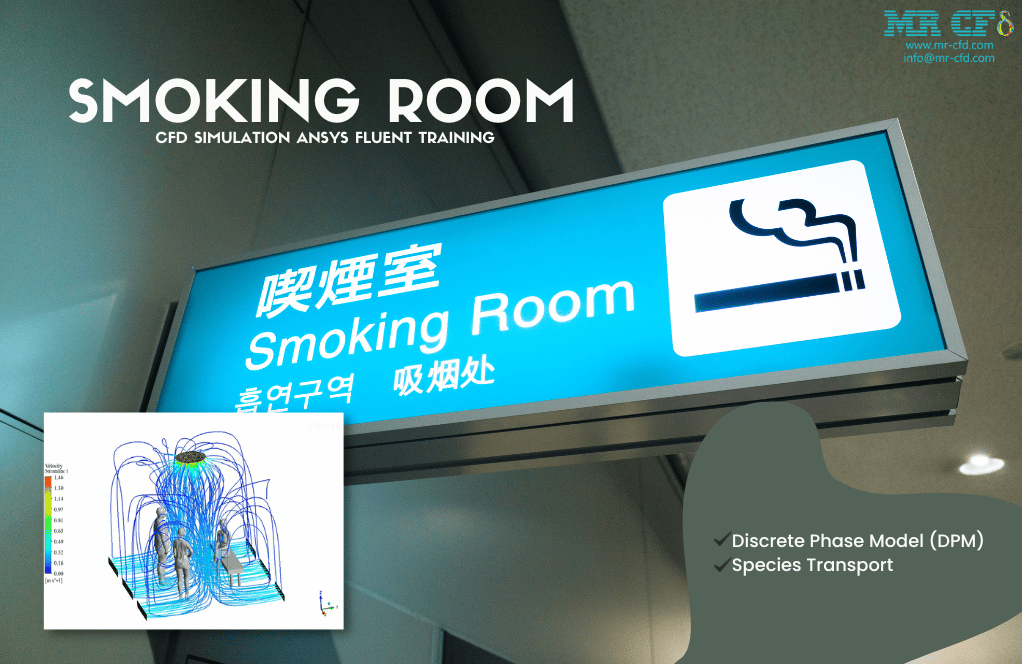
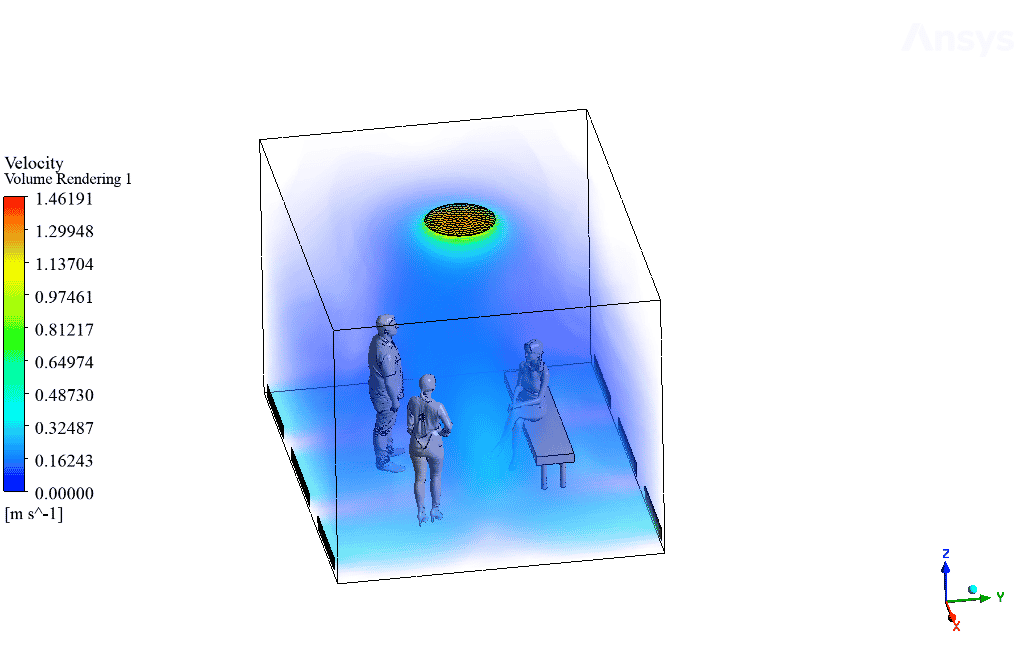
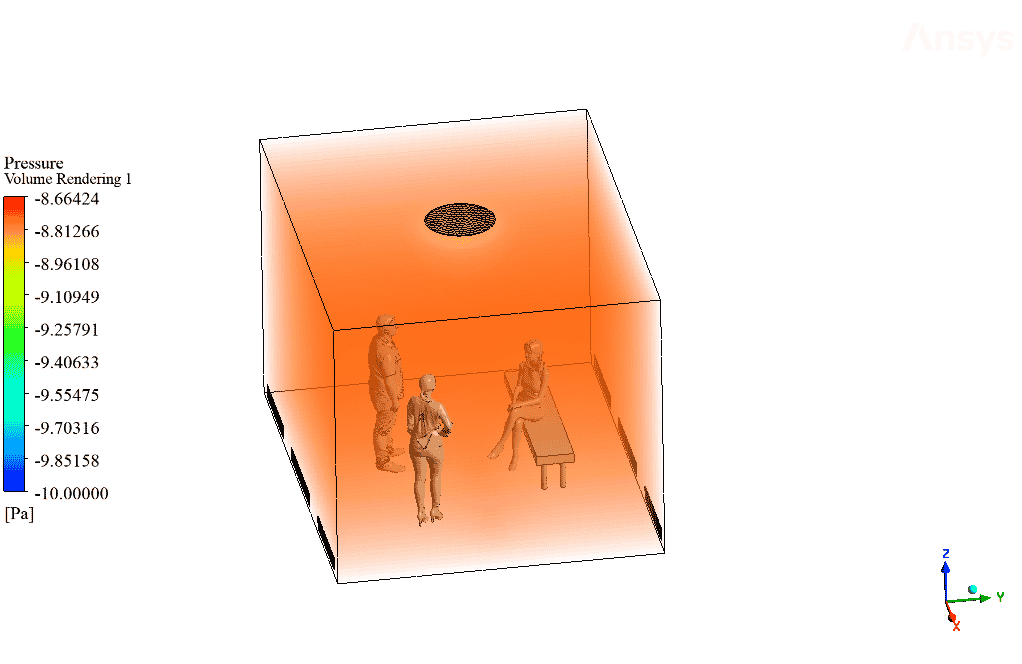
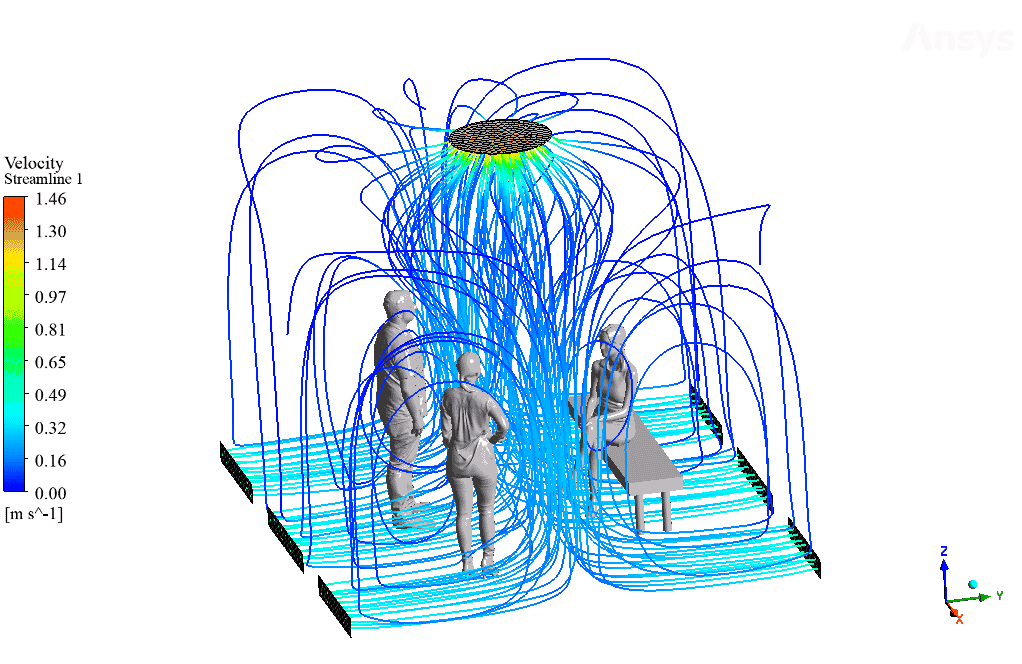
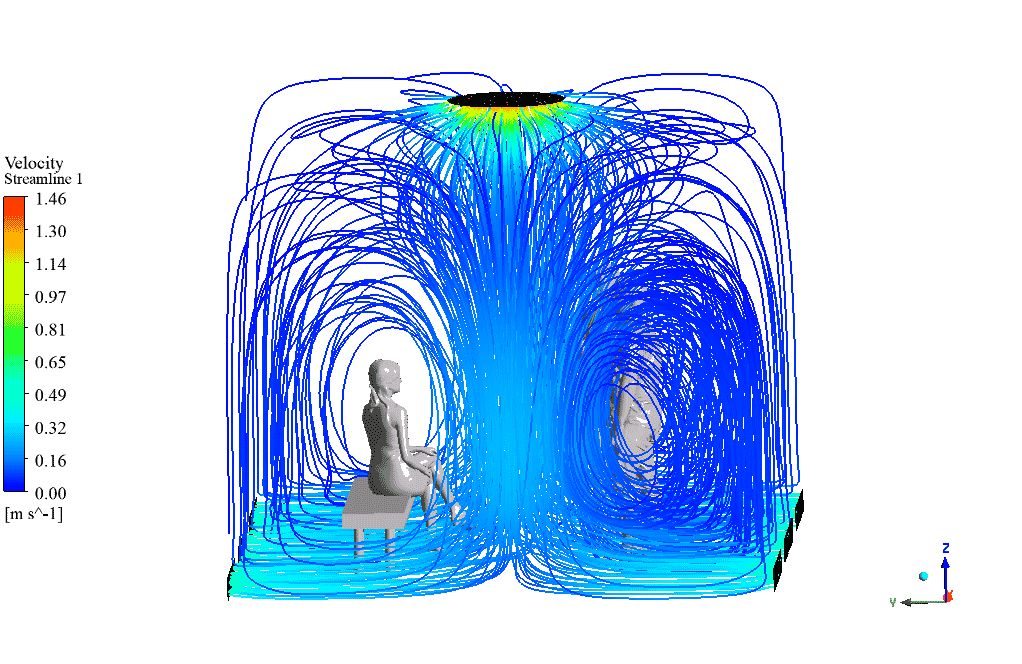
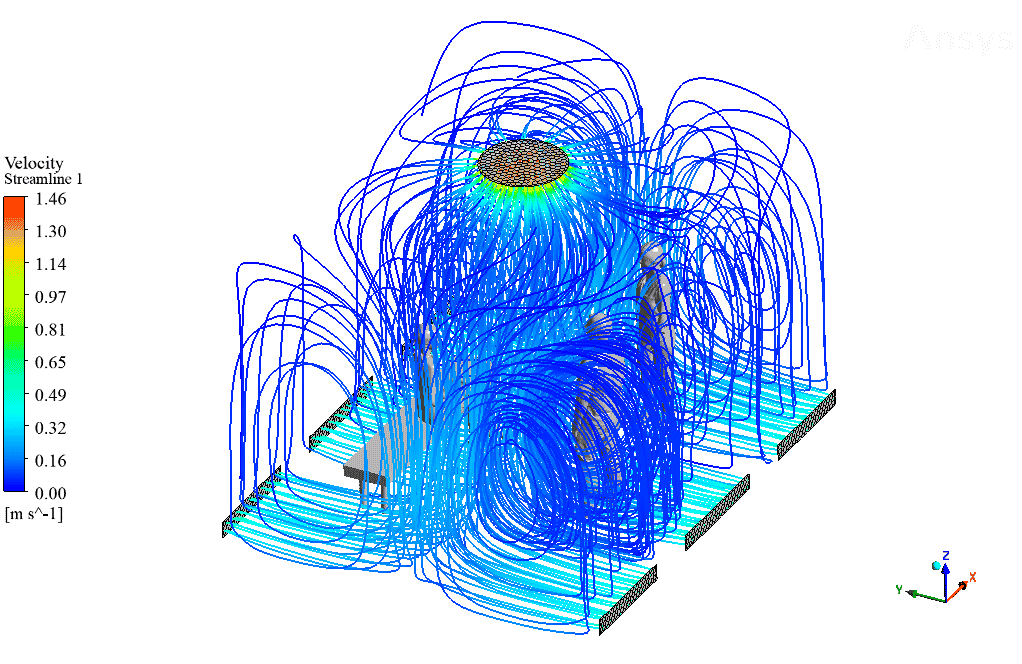
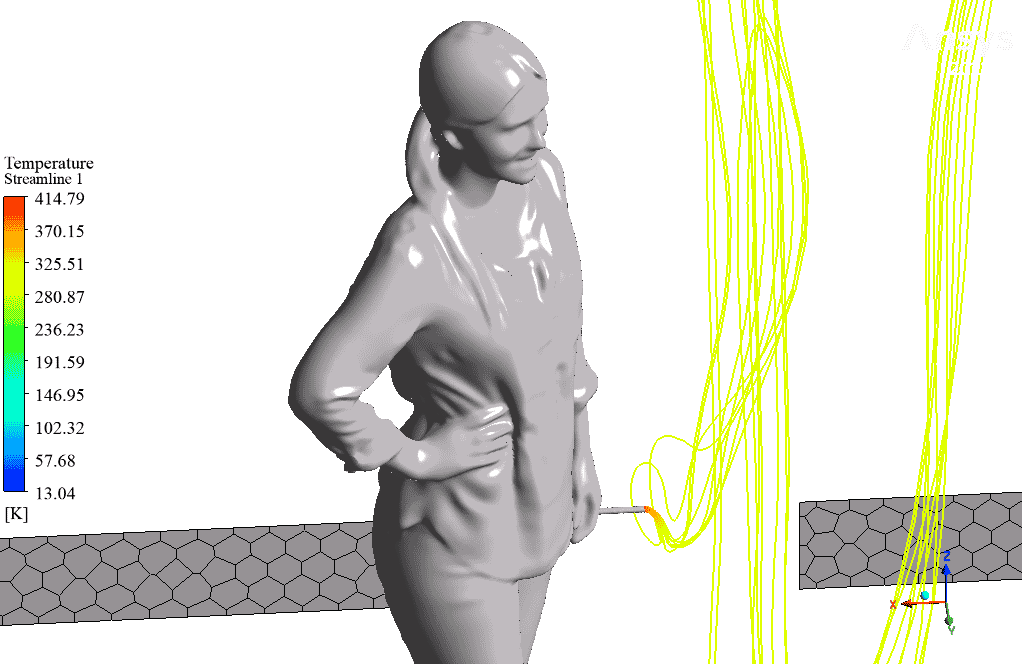
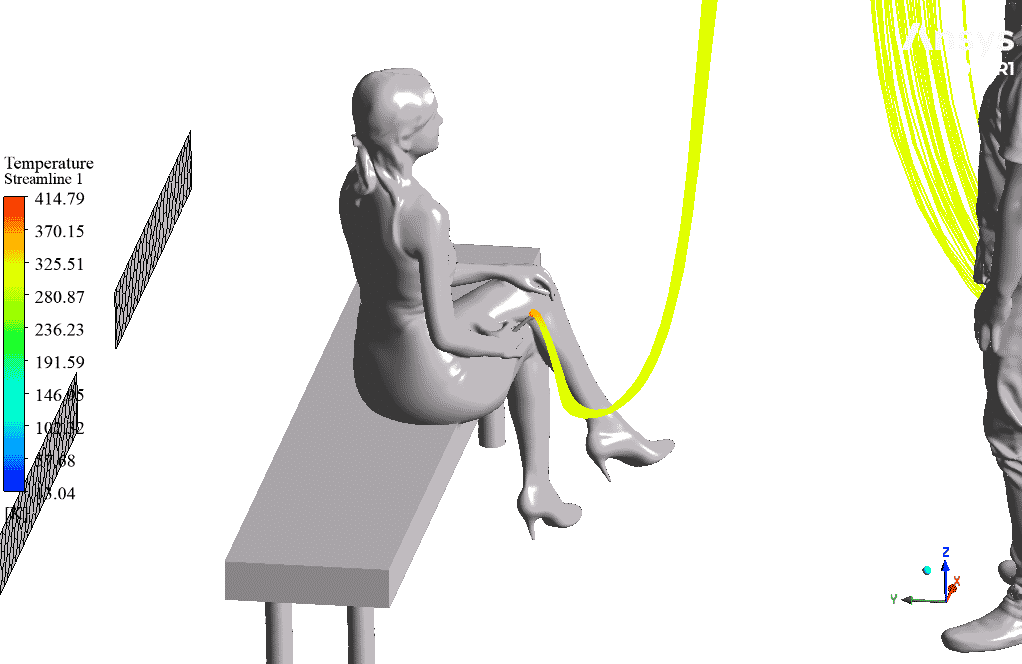
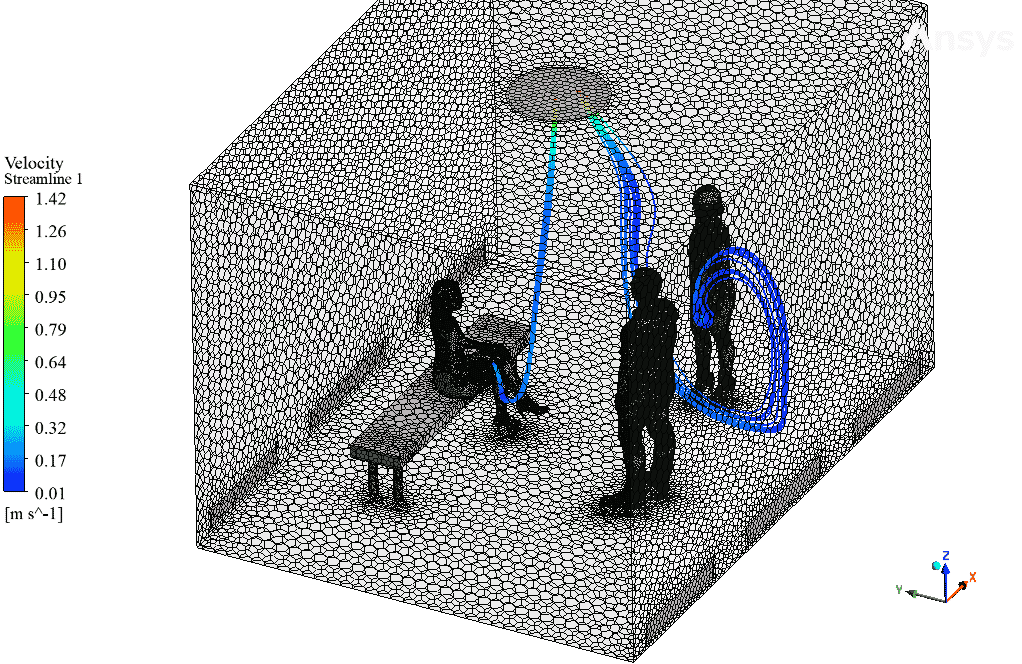
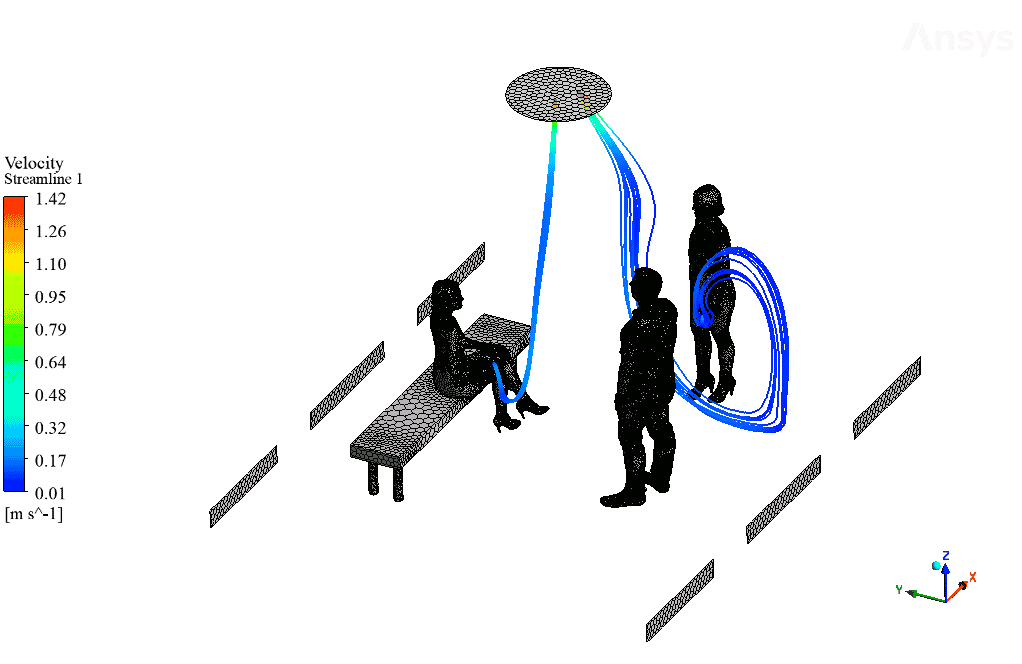
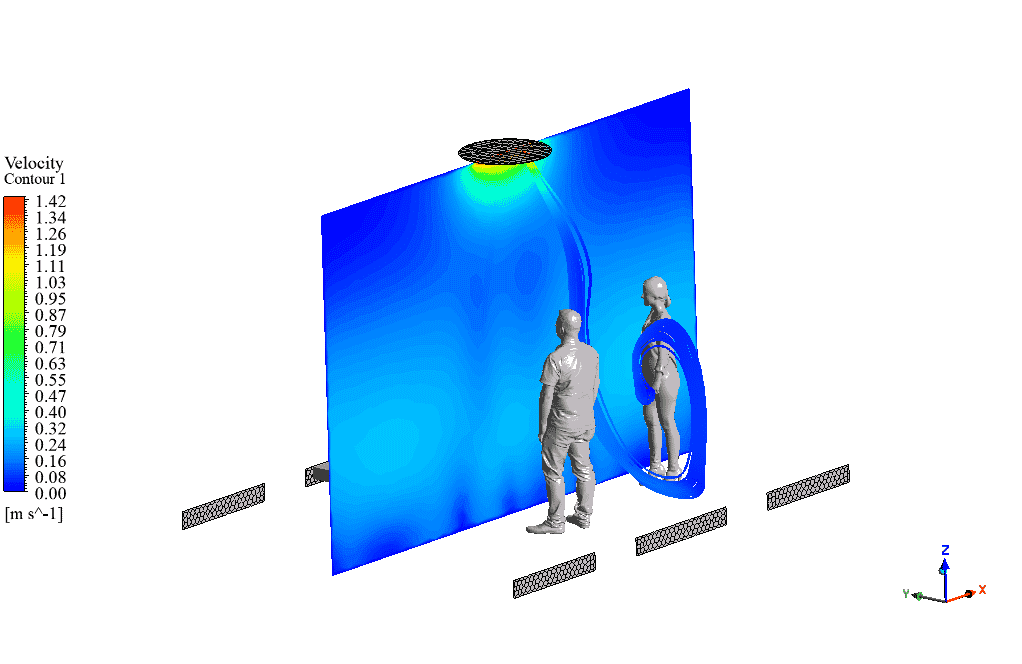

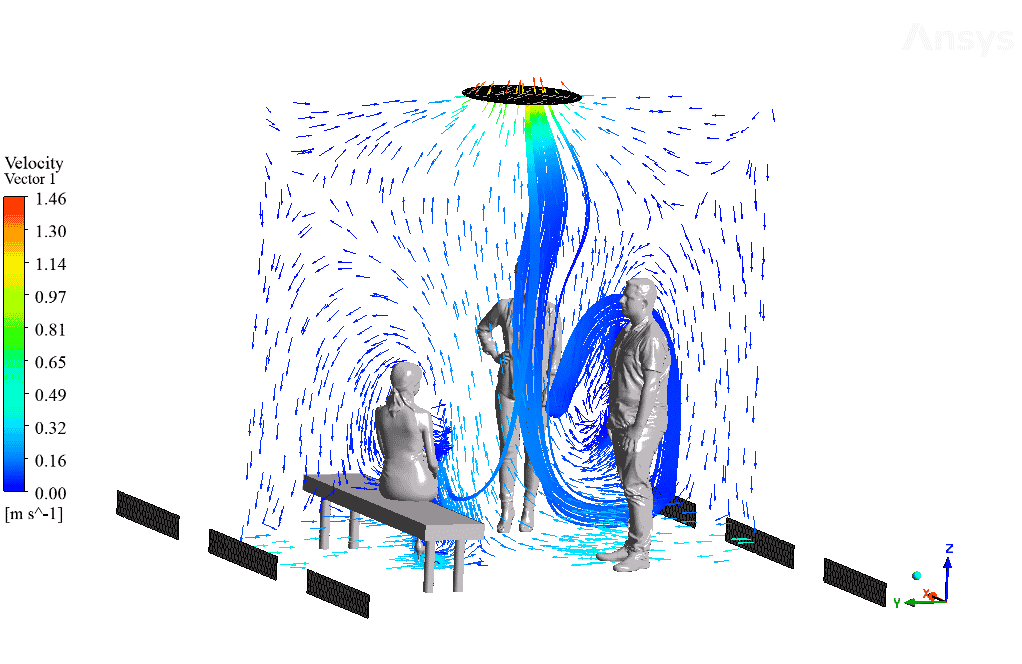


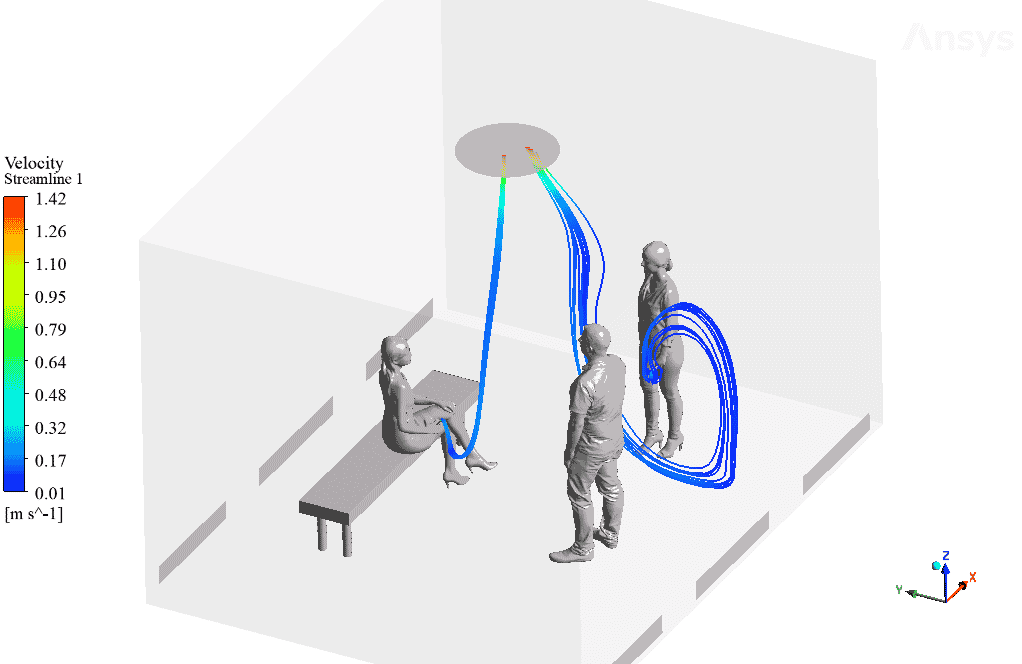
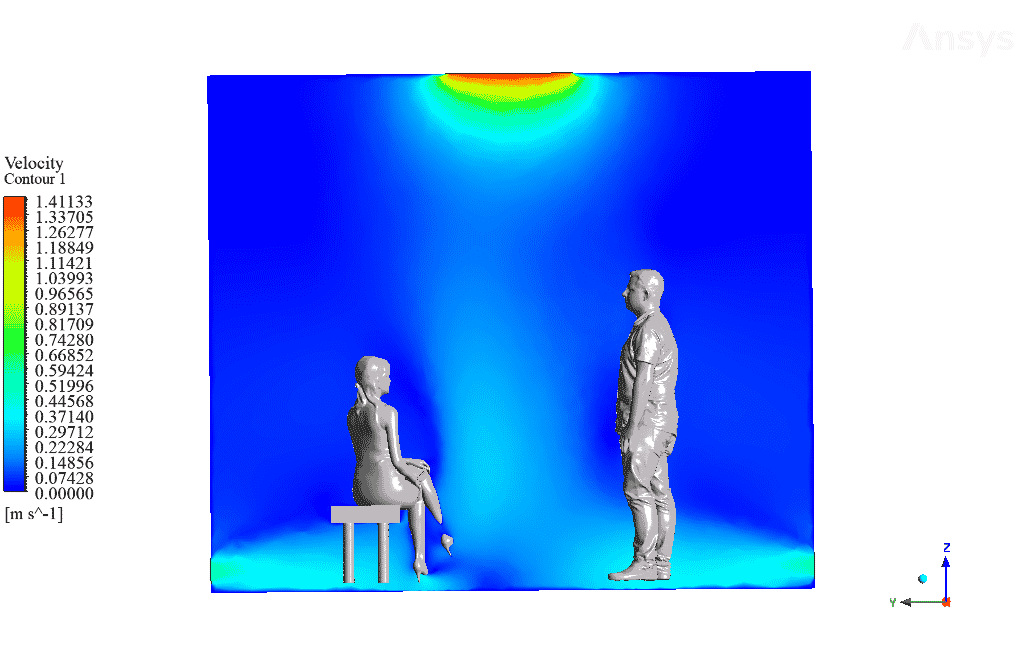
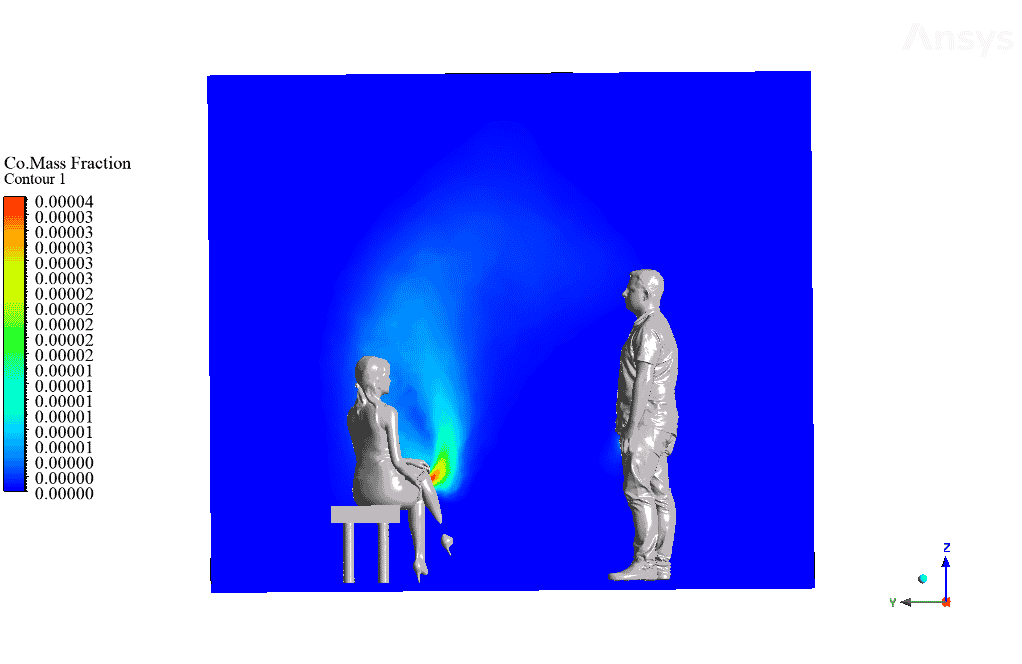
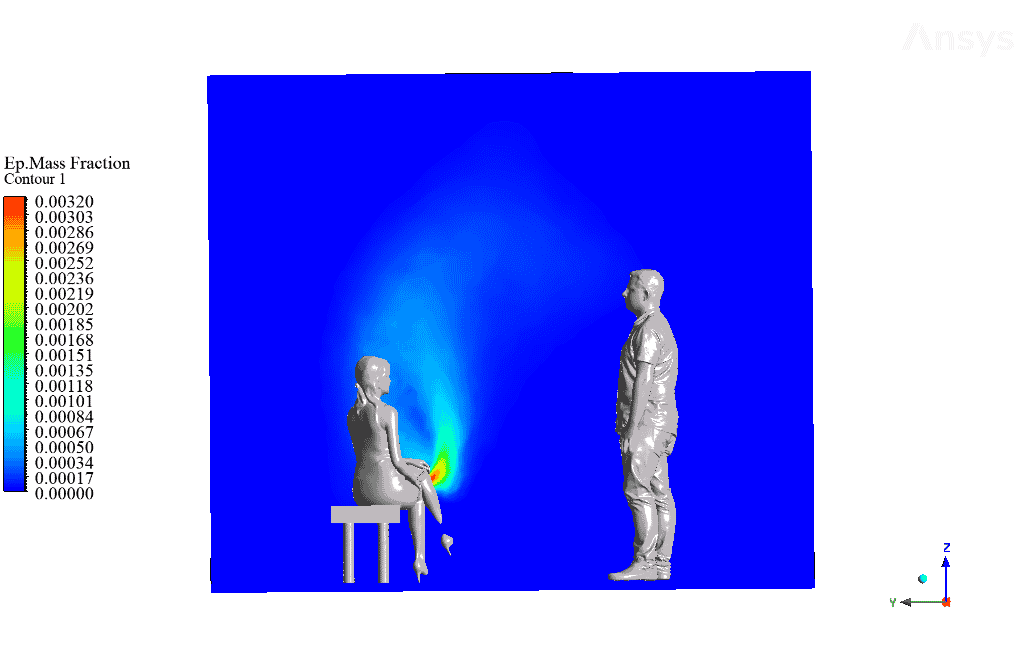
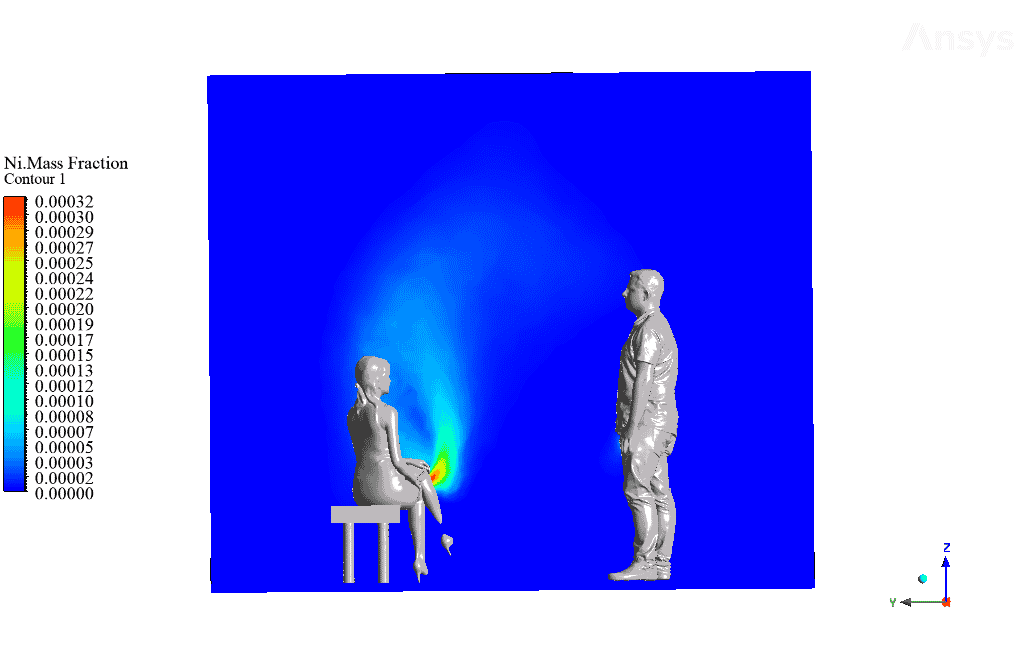
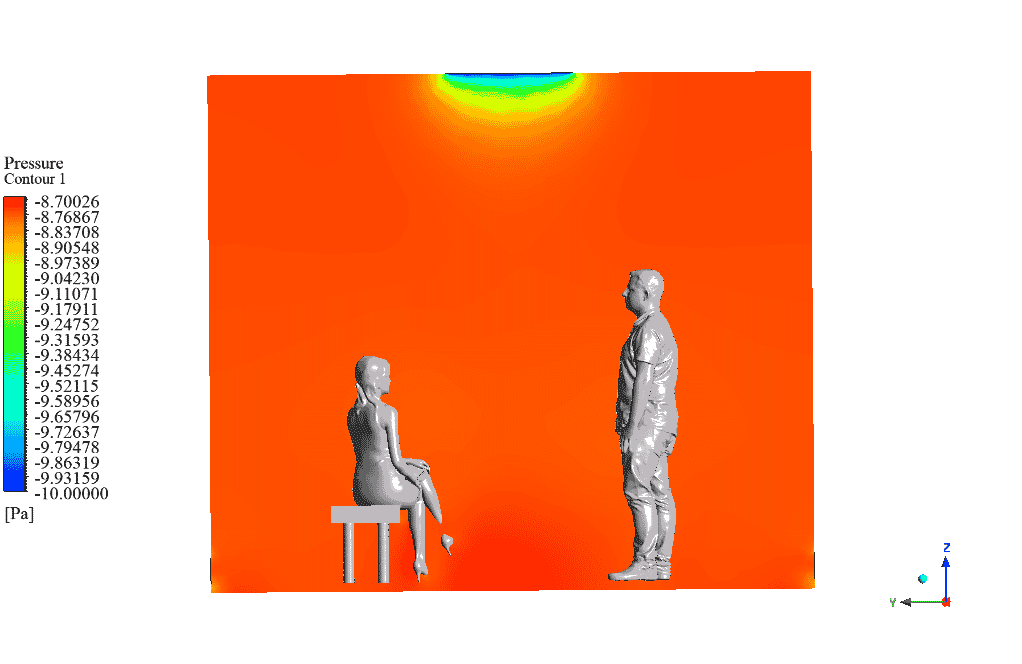
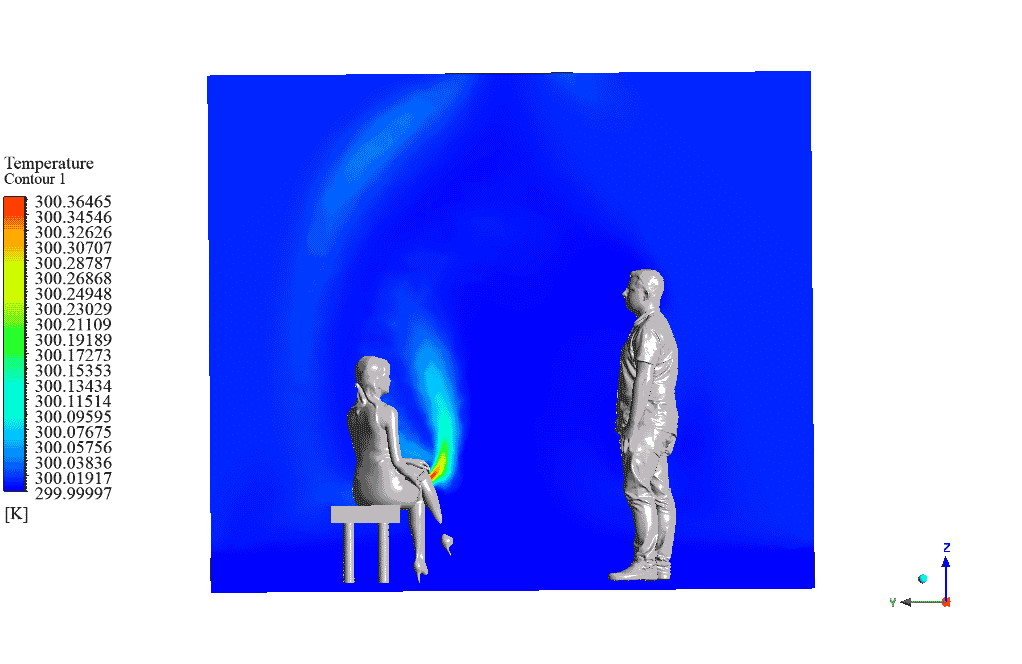
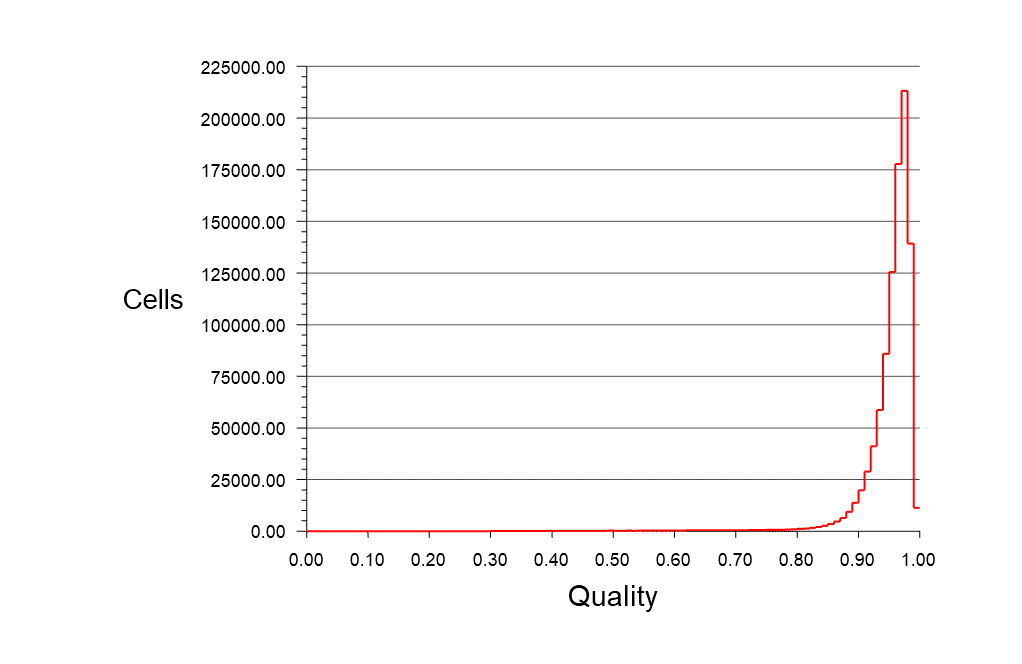
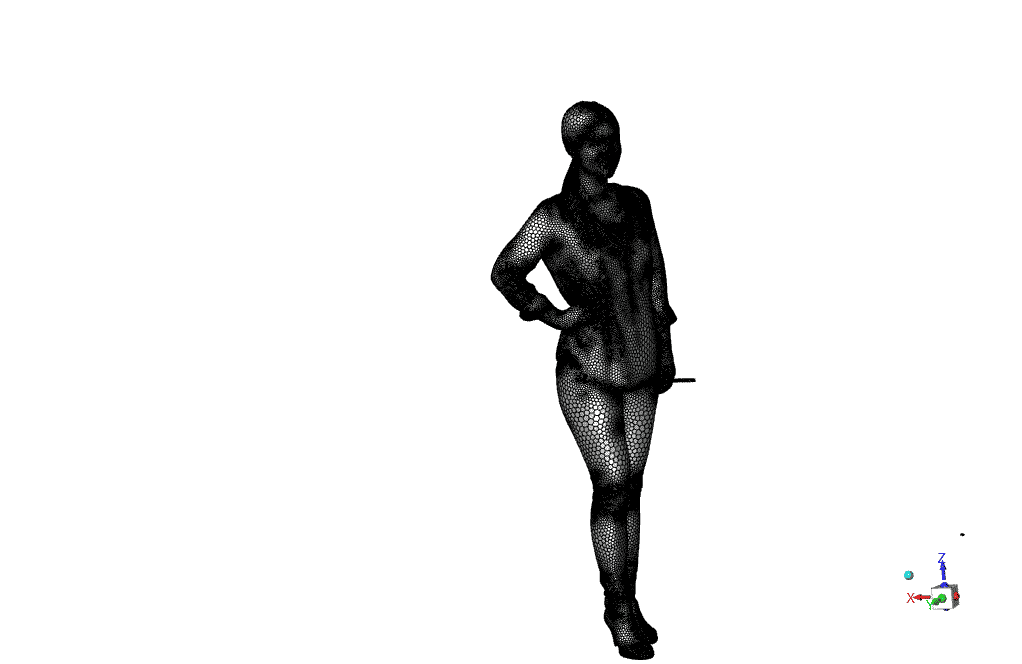
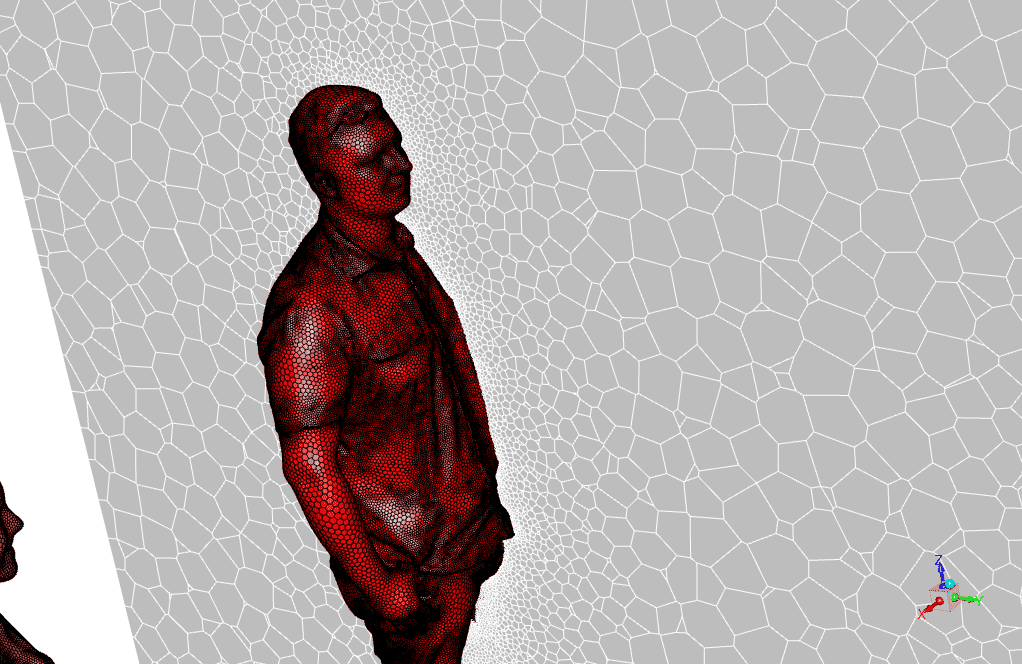
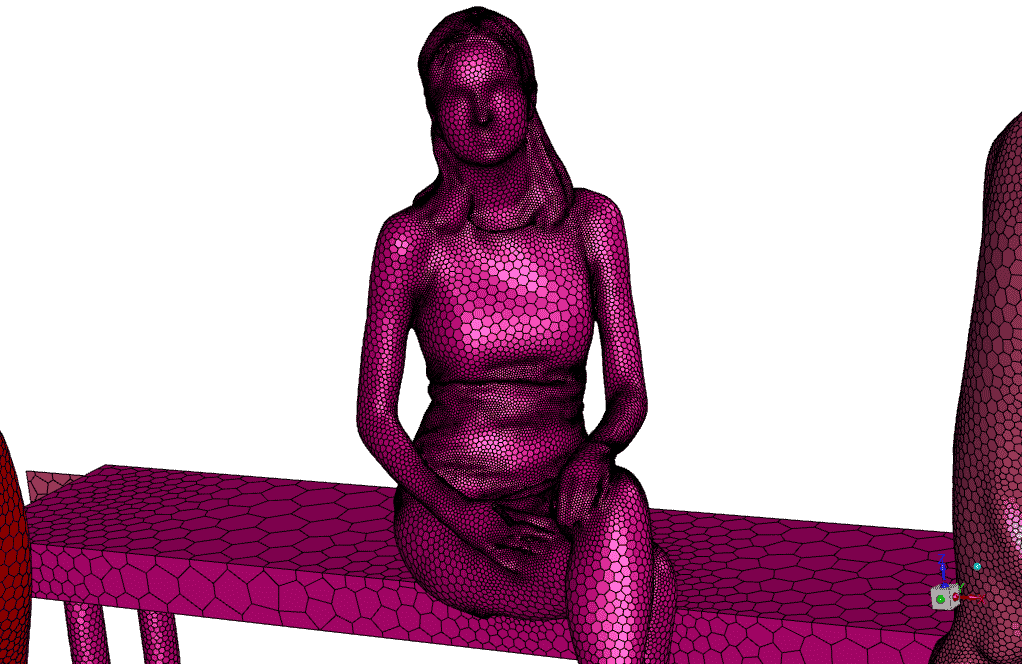
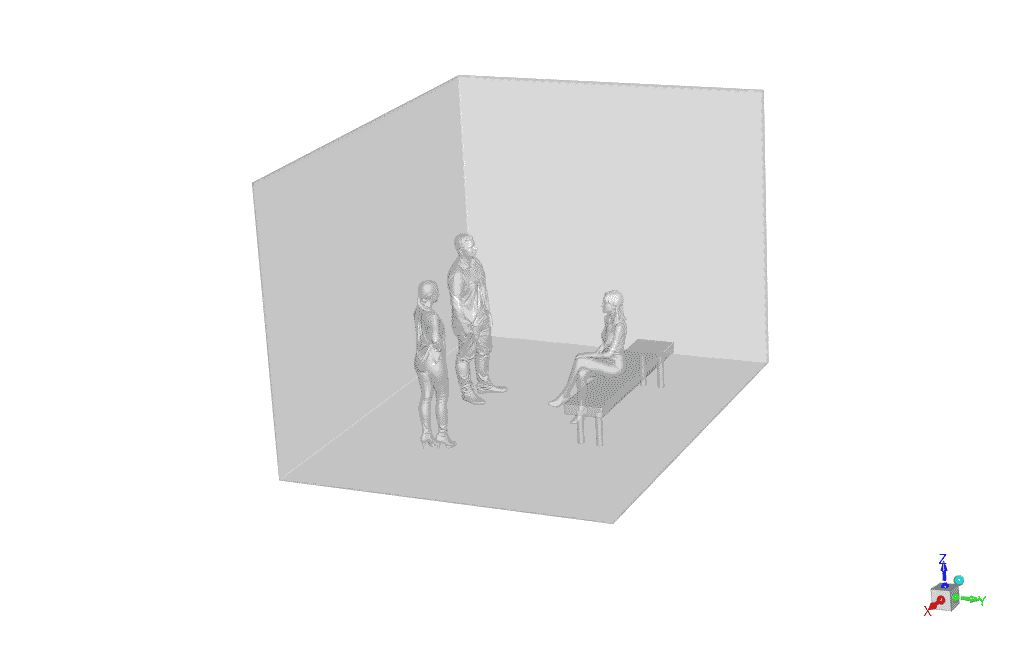
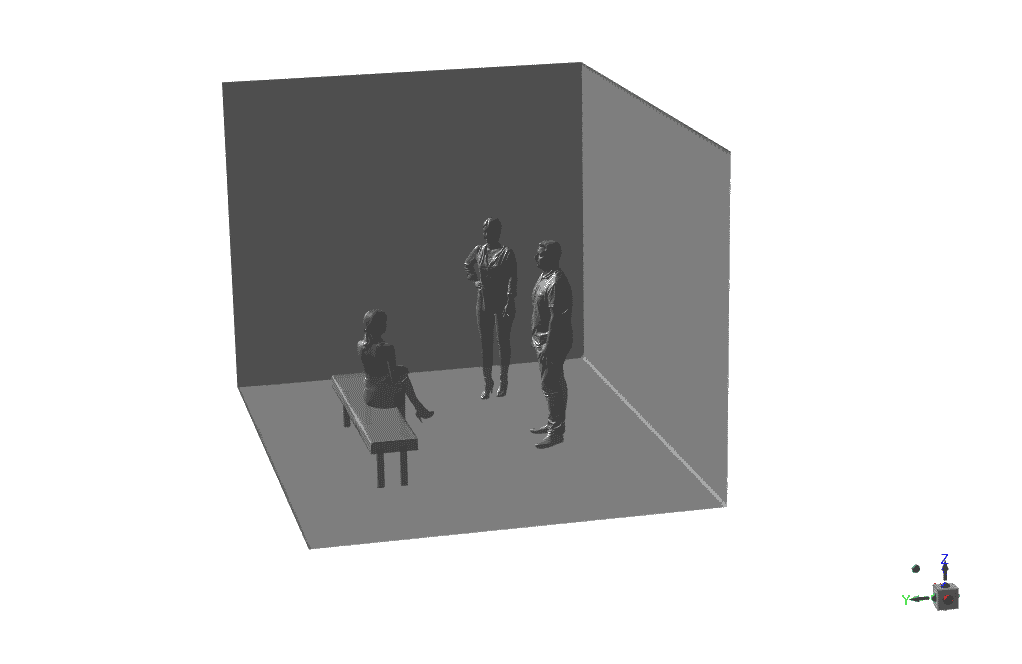
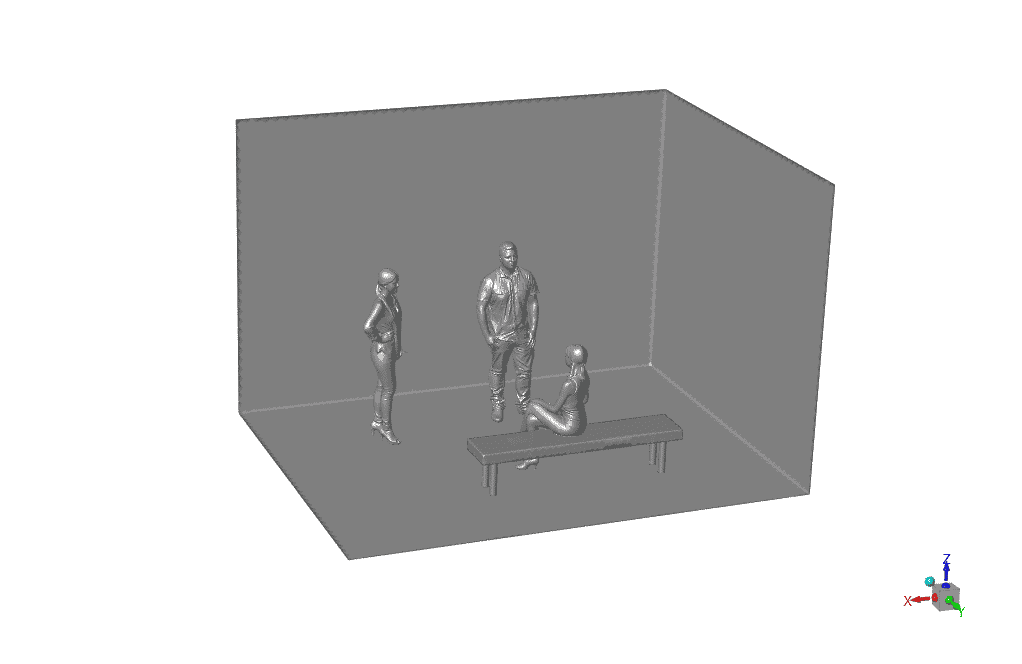
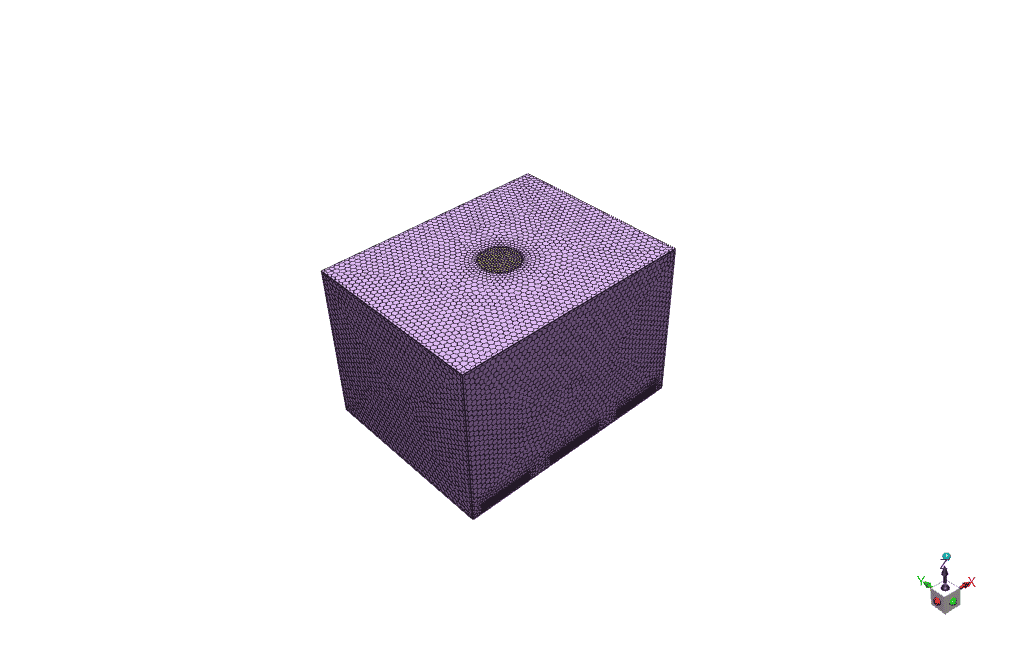
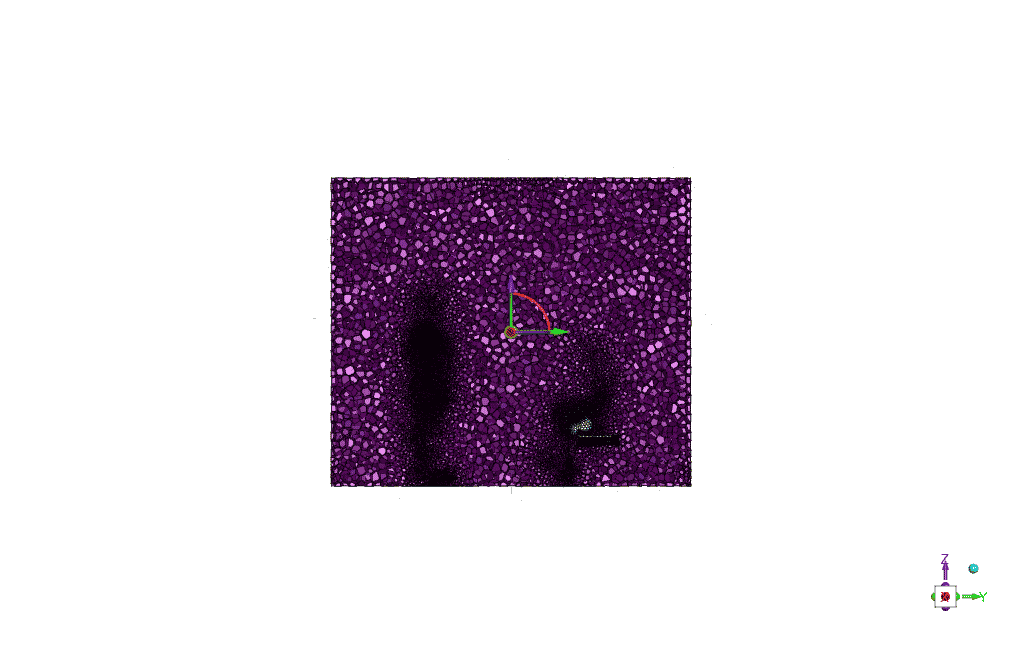
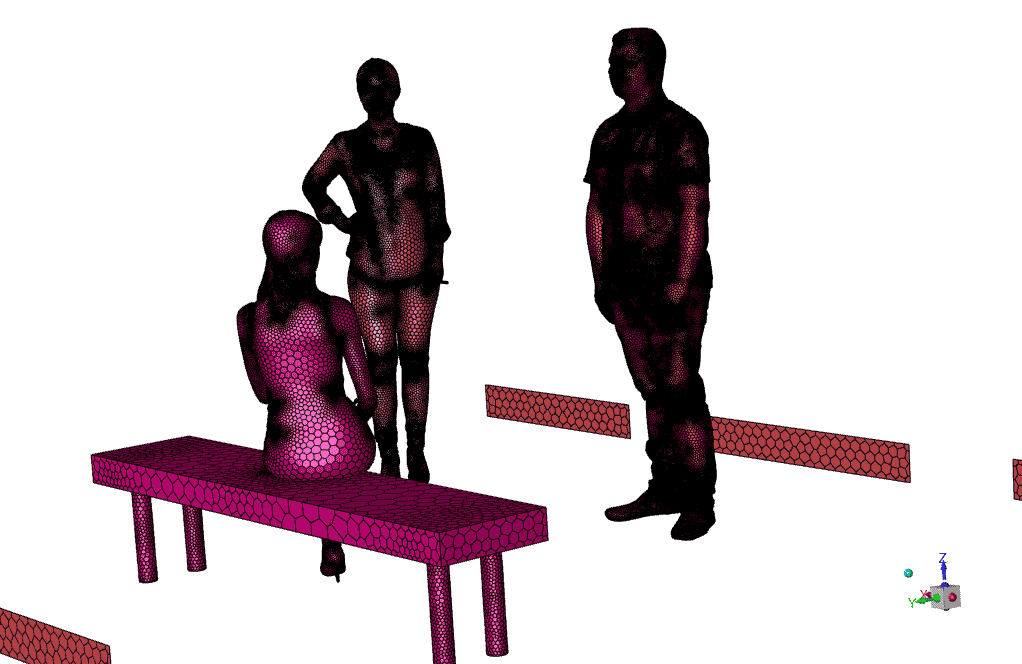
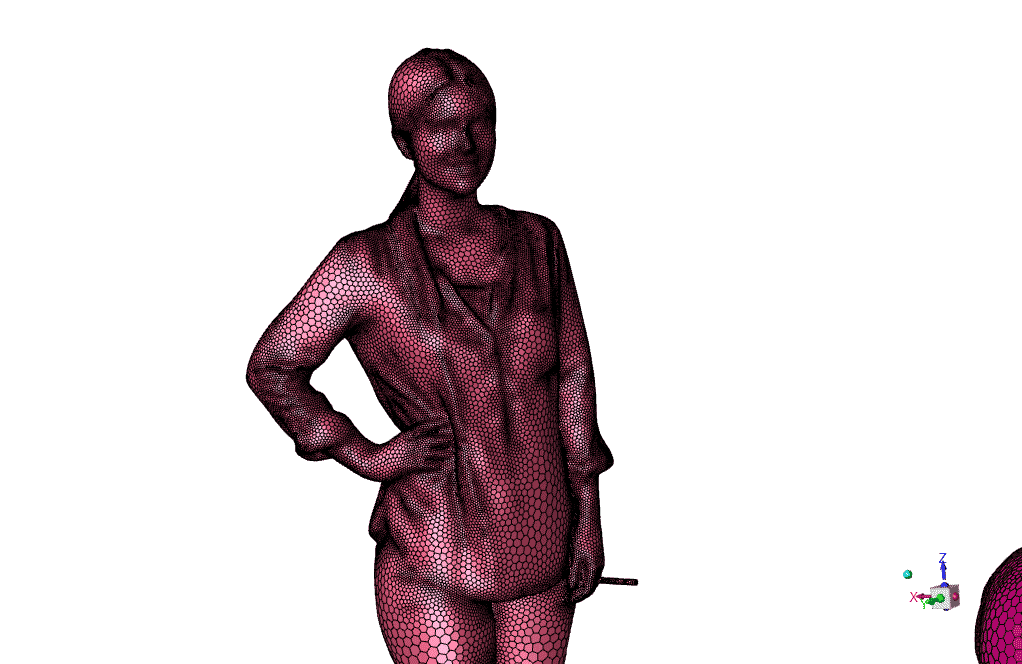




Leland Gleason DVM –
I am really impressed with the level of detail in the smoking room CFD simulation. As a non-smoker, I value a well-ventilated space. Could you tell me how effective the exhaust fan is at removing cigarette smoke according to the simulation?
MR CFD Support –
Thank you for appreciating the details in our simulation. Our CFD analysis reveals that the placement of the exhaust fan on the ceiling significantly contributes to the effective removal of cigarette smoke in the room. However, be assured air vortices and intake fan locations were also considered to optimize ventilation. The pathlines of smoke presented in the simulation results show how smoke particles are transported and extracted, reducing the overall smoke concentration where people are seated.
Melody Hoeger –
I’m quite interested to know what effects the temperature had on the smoke distribution due to its buoyancy. Were the influences of temperature on smoke movement captured effectively in the simulation results?
MR CFD Support –
The simulation takes into account the Energy equation to track temperature changes. Temperature affects smoke distribution due to buoyancy, and the simulation results include this by showing how smoke not only follows airflow from the exhaust and intake fans but also rises or moves due to temperature differences within the room.
Joanie Murazik –
Can you explain more about the materials being simulated for the cigarette smoke?
MR CFD Support –
In this simulation, the cigarette smoke is composed of four materials. These materials are simulated using different models to accurately capture their behavior and interaction with the room’s airflow and ventilation system. The simulation takes into account the physical properties of each material, ensuring a realistic representation of how smoke disperses and affects the quality of air within the space.
Edward Mitchell –
On what basis were the furniture placements like couch or sofa advised to be closer to the direction of the exhaust fan?
MR CFD Support –
The placements of the furniture pieces are advised based on simulation results that indicate areas with minimal air vortices and more effective smoke removal. The simulations reveal that locations closer to the exhaust fan facilitate quicker and more direct removal of smoke, hence providing a better and clearer environment for occupants.
Mabel Gerlach IV –
What specific details are provided regarding the simulation of cigarettes smoke in Ansys Fluent?
MR CFD Support –
In the simulation, cigarette smoke is composed of four different materials, modeled using a combination of the Species transport model and the Discrete Phase Model (DPM) in ANSYS Fluent. The negative pressure from the exhaust fan draws the smoke upwards, affecting its distribution in the room, and these nuanced interactions are studied to optimize room ventilation and smoke removal.
Prof. Anahi Bechtelar III –
The review mentions that the smoke enters the domain from the cigarette butts – how is inhalation by the individuals in the simulation accounted for, or is it not included in the model?
MR CFD Support –
In the described simulation, there’s no specific mention of accounting for the inhalation of smoke by the individuals. The primary focus has been on the movement and distribution of the cigarette smoke within the room due to the exhaust and intake fan airflow. If inhalation were to be represented in the model, this would involve a more complex interaction and possibly a different approach or additional modelling methods. It’s important to highlight this limitation in understanding real-life scenarios inclusive of human interactions with the smoke.
Hilma Frami –
The tutorial seems very comprehensive, but is particle tracking considered for the smoke movement, and how accurately can this predict smoke dispersion by actual smokers?
MR CFD Support –
Yes, the Discrete Phase Model (DPM) is used in the simulation to track the cigarette smoke particles. This allows for a detailed analysis of how smoke particles move and disperse in the room. The accuracy of the prediction depends on several factors, such as the precision of the initial conditions, the mesh quality, and the physical models applied. While it cannot capture every individual behavior of actual smokers, the simulation provides good insight into average smoke distribution patterns.
Mr. Xander Haag IV –
I was impressed to see the simulation provide visuals for smoke distribution affected by the air flow from fans. Is it possible to report on the time it takes for smoke to clear out after a person stops smoking in the room?
MR CFD Support –
Thank you for your positive feedback on the simulation! To answer your question, reporting the time it takes for smoke to clear out would involve executing a transient analysis where we can record the dissipation of smoke particles over time after the smoking stops. This is certainly possible and would provide valuable insights into the room’s ventilation effectiveness.
Emery Pfannerstill DVM –
The level of detail in your simulation is impressive. The smoke distribution analysis potentially provides great insight for designing healthier public spaces with better airflow management. Keep up the innovative work!
MR CFD Support –
Thank you for your kind words! We’re thrilled to know that our CFD simulation of a smoking room is providing valuable insights and that you appreciate the depth of our analysis in designing more comfortable and healthier public spaces. Your positive feedback is very encouraging for our team. If you need further details or assistance, feel free to reach out.
Jaunita Schneider –
This CFD simulation tutorial of the smoking room is very insightful. The inclusion of different smoke materials and the use of different models to simulate the smoke seems comprehensive. I appreciate the effort put into setting negative pressure to realistically model the exhaust fan situation. Can you add more details about how the presence of the people was modeled and if their movement was considered?
MR CFD Support –
In this simulation, the presence of people is simplified as static objects to capture their influence on airflow and smoke distribution. Their body heat and motion, such as arm movement or breathing, are typically not included in standard room airflow simulations. The people are not moving in this setup; they are predicted shapes that disturb the airflow and influence smoke behavior.
Louvenia Boyer –
I am highly impressed with how the Smoking Room CFD simulation offers insights into airflow and smoke patterns. The detail in the simulation report appears extensive and informative. Interpreting the results must’ve been fascinating, especially in understanding where smoke accumulates and what locations would be most comfortable for seating. Great job, team!
MR CFD Support –
Thank you for your kind words! We’re delighted to hear that you found the Smoking Room CFD simulation insightful and informative. Our team strives to provide detailed analysis to help users understand complex airflow patterns and their practical implications. We appreciate your feedback and are glad that you are satisfied with the results!
Mrs. Misty Bailey –
Were additional scenarios considered, like increased smoker density or varied positioning of individuals and fixtures inside the simulation, to see how it may affect smoke distribution and air quality?
MR CFD Support –
Thank you for the excellent question. Additional scenarios such as increased smoker density or varied positioning can indeed affect the smoke distribution and air quality in the room. While these specific scenarios were not detailed in this review, such considerations can easily be included in this simulation model to analyze their impact.
Leland Stehr DDS –
I appreciated the clear explanation of the methodology used in simulating the cigarette smoke in a smoking room. The details on the use of different models for the smoke materials and negative pressure were insightful. The visualization of smoke movement and the practical recommendations for furniture placement are particularly valuable. Great tutorial!
MR CFD Support –
Thank you for your positive feedback! We’re thrilled to hear that you found the tutorial insightful and practical. Our goal is to provide detailed and understandable CFD simulations that can be applied to real-world scenarios. If you have any further questions or need assistance with any additional simulation aspects, feel free to reach out.
Maribel Torphy –
Just finished the Smoking Room CFD simulation tutorial, and I’m impressed with the detailed approach and the comprehensive analysis. It was fascinating to see how different materials in cigarette smoke were simulated and how the smoke dispersion was affected by the room’s ventilation system. Your team’s dedication to providing a realistic representation of the smoke behavior and how it influences the room’s airflow was quite evident. This helps a lot not only in understanding CFD principles but also in practical applications like designing a ventilation system. Great job on the visual presentation of the smoke pathlines and understanding the interaction of the smoke with the environment.
MR CFD Support –
Thank you for your positive review! We’re thrilled to hear that you found the tutorial comprehensive and realistic. It’s gratifying to know our efforts to create a detailed simulation that provides both educational value and practical application insights have been successful. We’re glad the visual presentations of smoke pathlines and airflow interactions enhanced your understanding. We appreciate your feedback and hope you’ll find our other tutorials just as helpful!
Prof. Antonio Marvin III –
I really enjoyed the detail on how this simulation considered different smoke materials and used negative pressure in the exhaust! Can you tell me the total duration of the simulated time and the average computation time for this type of analysis?
MR CFD Support –
I’m glad to hear you found the detail fascinating! The total simulated time and computation time can vary based on various factors such as mesh refinement, computational power, and the complexity of the model. However, typical simulations for a smoking room like this could run for several minutes of simulated time to capture transient behaviors, which may translate to hours or even days of actual computation time, contingent on the hardware used and the desired accuracy. If you require more specific information about this simulation’s time frames, I would be happy to provide detailed insights or it can be seen in the tutorial content.
Marianne Balistreri –
The simulation describes a situation with smokers in a room. Could you clarify how the room’s negative pressure impacts the smoke dispersion, and is this factor critical in the movement of the smoke?
MR CFD Support –
In the simulation, the room’s negative pressure created by the exhaust fan is a critical factor, as it drives air circulation by sucking smoke and air towards it. This promotes the dispersion of smoke and ensures that the smoke doesn’t stagnate, keeping the air clearer, especially near areas where individuals might be seated.
Zoila Lehner Jr. –
The simulation tutorial for the smoking room is incredibly insightful. It really brings to light the dynamics of smoke dispersal within an enclosed space and illustrates the effectiveness of exhaust and intake fans in removing smoke. The use of both the Species transport and Discrete Phase Model (DPM) makes the simulation quite robust. This will definitely help in designing smoking rooms with optimal air quality.
MR CFD Support –
We appreciate your positive feedback on our Smoking Room CFD Simulation Tutorial. It’s great to hear that you found the insights on smoke dispersal and the application of different simulation models helpful for room design and air quality management. Thank you for taking the time to review our product!
Amelie Kerluke IV –
The tutorial for the smoking room simulation was excellent! It provided detailed insights into the flow of smoke and the impact of air circulation from the exhaust fan. I found the visualization of smoke pathlines particularly helpful. Thanks for showing where furniture should be placed to minimize exposure to smoke!
MR CFD Support –
Dear customer, we’re thrilled to hear that you found the simulation tutorial on the smoking room insightful, especially the parts about smoke movement and placing furniture. Thank you for your positive feedback, and we look forward to helping you with more learning products in the future!